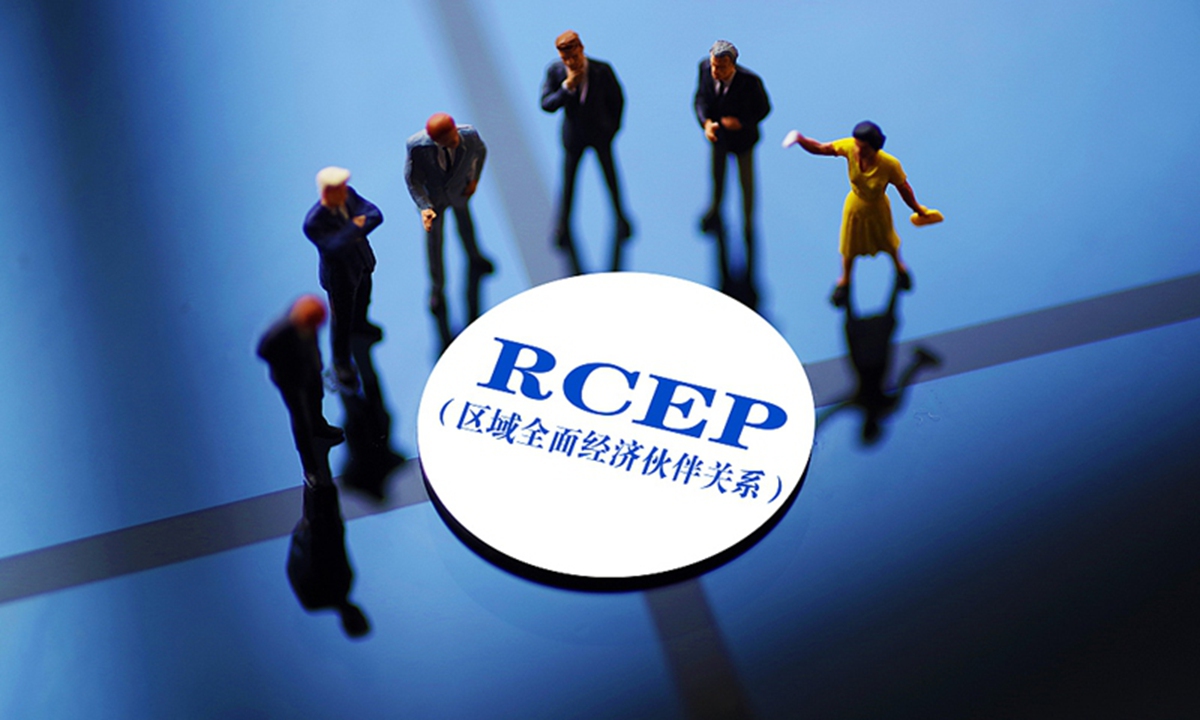
RCEP Photo: Xinhua
With the Regional Comprehensive Economic Partnership (RCEP) agreement coming into force for South Korea at the beginning of February, regional trade and economic cooperation among China, Japan and South Korea - the three major economies in East Asia - are expected to embrace new growth engines within the framework of the mega deal, bringing hope amid the ongoing pandemic and multiple global uncertainties.
Since the RCEP came into effect in China and Japan in January, it became the first free trade agreement (FTA) that fully includes China, Japan and South Korea, which is significant for regional economic cooperation and integration of East Asia, Chinese experts said.
The mega deal will reduce the tariff costs of cross-border trade among its members and lead to facilitating measures such as self-declaration of origin by approved exporters.
Cherry Group, a large garment manufacturer based in Qingdao, East China's Shandong Province, obtained the first RCEP certificate of origin for South Korea on February 1.
As a result, the company's exports could enjoy tax relief of more than 10,000 yuan ($1,572) annually at customs clearance in South Korea, with the tariff rate being cut in half to 6.5 percent, a company representative told the Global Times on Sunday.
The company's annual exports to South Korea reach more than 22 million yuan. Thanks to the favorable tariff reduction policy under the RCEP, it is estimated that its annual tariff costs in the South Korean market could be reduced by more than 1.4 million yuan, which would directly drive its exports to South Korea up about 10 percent on a yearly basis, according to the representative.
An employee surnamed Wang at an exporter of aquatic products in Shandong told the Global Times on Sunday that after the RCEP deal took effect in South Korea, the tariff on its exports to South Korea was further reduced, boosting the company's profits.
Wang said that China also announced preferential policies to promote bilateral trade, including the China-South Korea FTA, which came into effect in 2015.
The RCEP offers additional support for bilateral trade on top of those under the China-Korea FTA. For example, under the RCEP, China promises to immediately implement zero tariffs on some chemical products, zero tariffs on mechanical products in the 10th year after it takes effect, and zero tariffs on auto components in phases.
In 2021, China-South Korea trade hit about 2.34 trillion yuan, up 18.4 percent year-on-year, Chinese customs data showed. South Korea has become China's fifth-largest trading partner.
For South Korea, the RCEP will be conducive for pushing bilateral trade and investment to a high-quality development stage, according to China's Ministry of Commerce.
"Through the mega deal, free trade ties have been forged between China and Japan, and Japan and South Korea, which will have a positive influence for the three parties in exploring an FTA," Zhao Gancheng, a research fellow at the Shanghai Institute for International Studies, told the Global Times on Sunday.
The three countries are expected to achieve more economic synergy and cooperation in East Asia, and that's expected to bring hope to a global economy that is facing multiple uncertainties amid the pandemic, Zhao said.
"If facilitating measures under the RCEP deal accelerate implementation, it will bring real benefits for the three nations," he noted.
The RCEP agreement has been widely applauded in the Asia-Pacific region as an important step toward deeper regional integration and a source of renewed momentum for global free trade and multilateralism.




